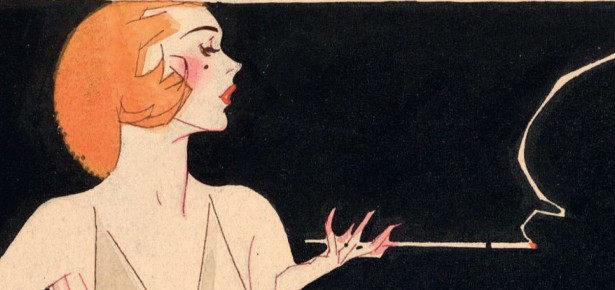
In Season 5 of Downton Abbey, Lady Mary Crawley shocks her maid by asking Anna to purchase contraceptives on her behalf. After explaining that “I have to be sure there aren’t any consequences” from a planned week with a beau, Mary hands Anna a copy of a book by Marie Stopes that “tells you everything.” Anna uses Stopes’s book to make the purchase but finds herself humiliated by the shopkeeper, who insists on details about her marital status and reproductive health before completing the sale. Viewers might well be shocked by the difficulty of obtaining contraception in the period, and most would not recognize the device Anna brings to Mary in a brown paper bag.
When watching this scene, I could not help but think of Allison Pease’s essay on sexuality in The Cambridge Companion to Modernist Culture. As Pease explains, Stopes’s books—Mary likely read either Married Love (1918) or Wise Parenthood (1919)—were an outgrowth of her work with women at clinics in London. By 1937, Stopes estimated that twenty-six thousand individuals had sought assistance with birth control from her midwives and nurses. Those who could not visit one of Stopes’s clinics turned to her wildly popular books; birth control options included cervical caps, sponges, and pessaries. Fans have debated whether Anna succeeds in purchasing a cap or pessary; both devices required a fitting, a need that becomes obvious when looking at a period example. It is doubtful whether a woman like Mary would have success with an item purchased over the counter. Moreover, such devices would not protect against venereal disease, a genuine threat given the prevalence of prostitution in the previous decade. Nevertheless, the episode reflects what Pease characterizes as an increasing desire for erotic companionship before and within marriage during the 1920s: Mary’s wish for sexual compatibility with a prospective husband is of a piece with the increasing assumption that spouses find pleasure only in the marital bedroom.
In these ways and others, Downton Abbey reflects the new innovations and shifting belief systems that made the early twentieth century a vertiginous time. Lord Grantham’s initial resistance to purchasing a wireless set; Lady Rose MacClare’s flirtation with a black band leader; and Lady Edith’s newspaper columns all reflect the impact of changing technology as well as the increasing social roles available to women and racial minorities in the period. To learn more about where the series accurately reflects its social moment—and where it takes a bit of license—please take a look at The Cambridge Companion to Modernist Culture, which provides period detail and cogent analyses of the range of changes in such fields as fashion, visual art, religion and technology.
Latest Comments
Have your say!